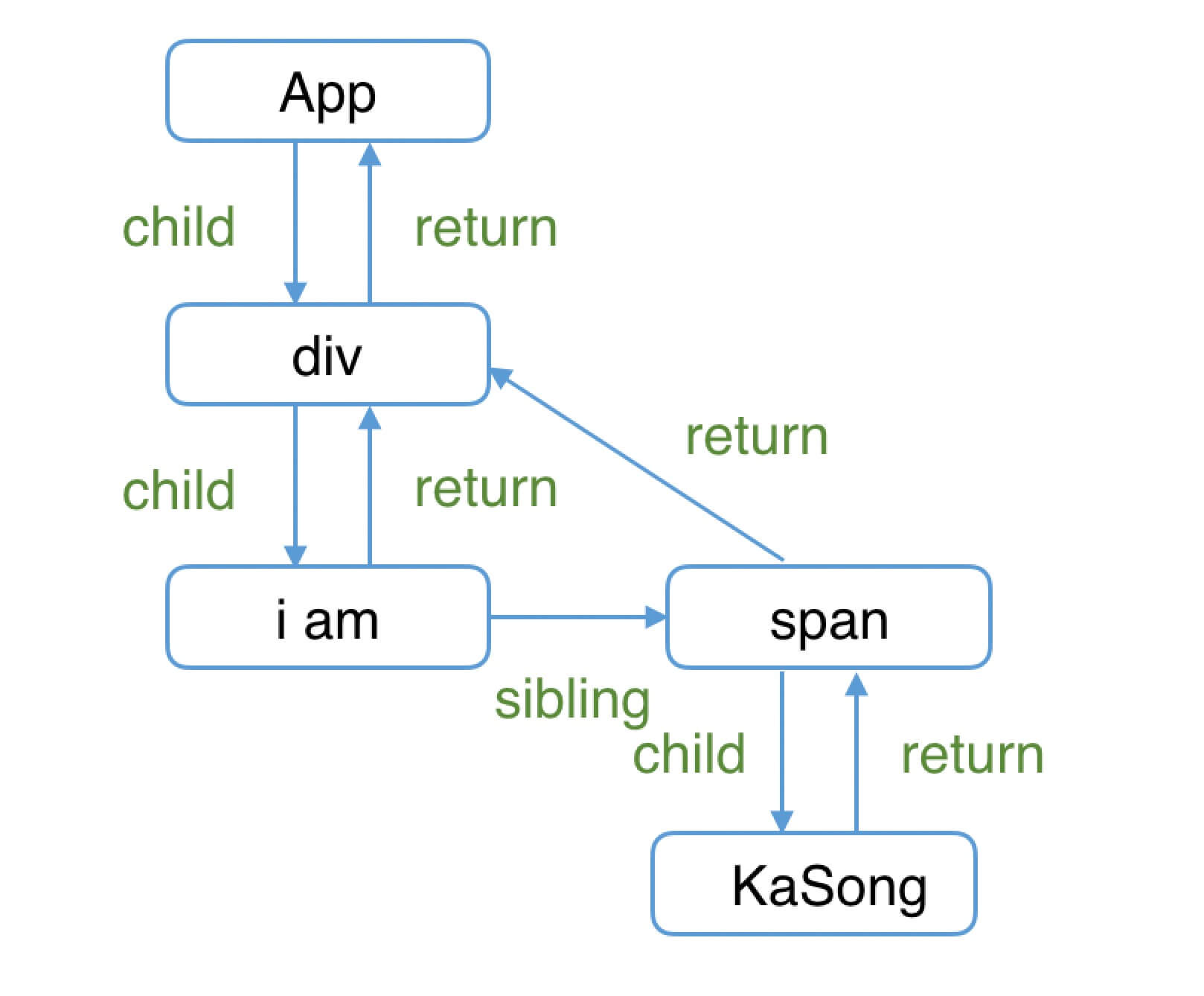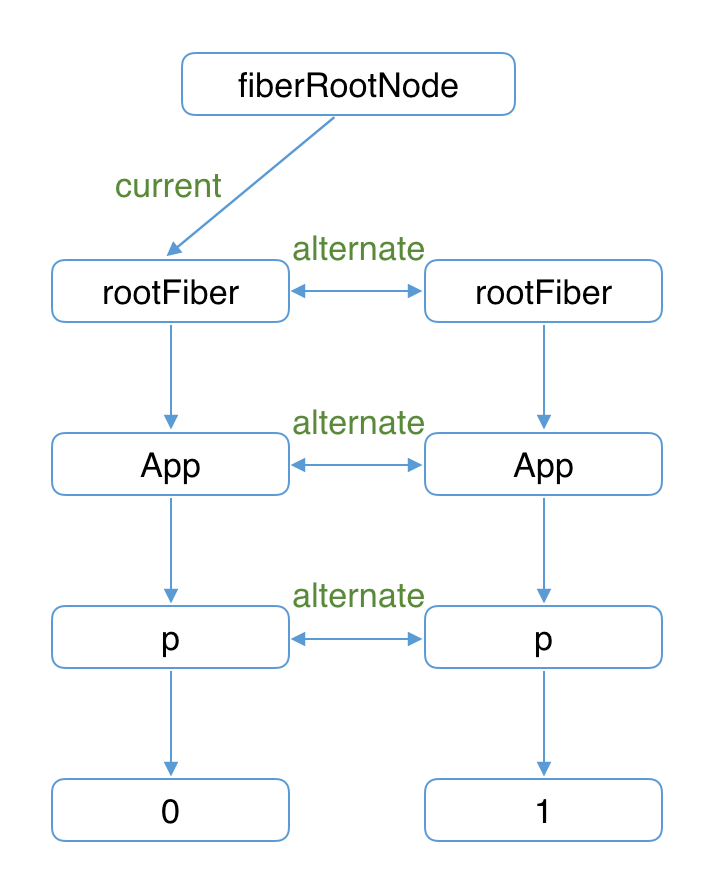Fiber
起源
在React15及以前的版本中,React采用递归的方式创建虚拟DOM,这个递归过程是不能中断的。如果组件树的层级很深,需要耗费大量时间创建递归创建DOM,那么就会阻塞线程,导致界面卡顿。
为了解决这个问题,React16引入了Fiber,重写了底层架构,将React的更新改为了异步可中断的更新。
结构
在 react-reconciler/src/ReactFiber.new.js中,定义了 Fiber的结构:
javascript
function FiberNode(
tag: WorkTag,
pendingProps: mixed,
key: null | string,
mode: TypeOfMode,
) {
// ====== 节点相关 =====
// react 中的一套自己定义的标签
this.tag = tag;
// 节点的 key 值
this.key = key;
// jsx 解析出来的标签的类型,可以为 字符串,对象等形式。
this.elementType = null;
// 大部分情况下与 elementType 相同,但是有时候会被处理为其他值。
this.type = null;
// 对于 普通标签,如 div,存储着对应的真实节点
// 对于 class 组件,存储着对应的 实例
// 对于 RootFiber,指向的是 FiberRoot
this.stateNode = null;
// ====== fiber 结构相关 =====
// 指向父fiber
this.return = null;
// 指向子fiber
this.child = null;
// 指向后一个兄弟fiber
this.sibling = null;
// fiber 的index,用于 diff 算法对比是否需要移动
this.index = 0;
// ref
this.ref = null;
// ====== 状态相关 =====
// 新的 props
this.pendingProps = pendingProps;
// 老的 props
this.memoizedProps = null;
// 更新队列,保存着所有update,可以通过该队列来改变 state 等
// 注意:不同类型的节点,他们的更新队列存储的内容可能不一致
this.updateQueue = null;
// 老 state
this.memoizedState = null;
// 使用了 React.createContext 的 context 时,会将 context 记录下来。
this.dependencies = null;
// 当前 react 模式,react18 将默认采用 ConcurrentMode
this.mode = mode;
// ====== effect 副作用 =====
// 当前 fiber 对应的操作
this.flags = NoFlags;
// 子fiber 对应的操作
this.subtreeFlags = NoFlags;
// 存储哪些 老fiber 下的 子fiber 需要删除
this.deletions = null;
// ====== 调度相关 =====
// 当前 fiber 操作优先级
this.lanes = NoLanes;
// 子fiber 操作优先级
this.childLanes = NoLanes;
// 指向对应的另一个fiber,构成双缓存结构
this.alternate = null;
}Fiber树
每一个节点对应一个 ReactElement,每一个ReactElement对应一个 Fiber。根据节点所在的具体位置,可以通过Fiber的return/child/sibling三个属性将所有的Fiber构建成一颗Fiber树。

双缓存
在React中最多会同时存在两颗Fiber树,当前屏幕中已经显示的Fiber树在React源码中通常以变量current表示。当界面更新时,会在内存中构建另一颗Fiber树,在源码中以workInProgress表示。它们之间可以通过alternate变量来访问。具体代码在react-reconciler/src/ReactFiber.new.js的createWorkInProgress中:
javascript
workInProgress.alternate = current
current.alternate = workInProgress构建完成后的双缓存结构具体如下:

该结构在reconcile阶段有着非常重要的作用,后续会在beginWork和completeWork中会提到具体的执行过程。
